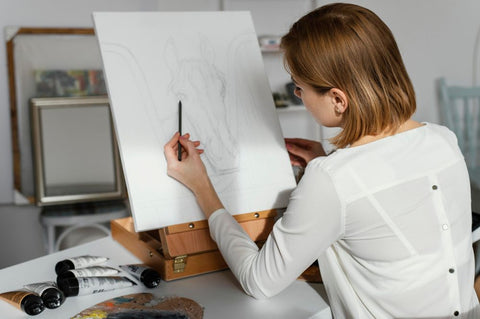Drawing is a captivating and expressive form of art that allows individuals to convey their thoughts, emotions, and observations through lines, shapes, and colors. While some people may possess a natural talent for drawing, it is essential to understand that drawing is a skill that can be developed and improved over time with practice and dedication. In this article, we will explore the fundamental skills needed to become a proficient artist and delve into the journey of mastering the art of drawing.
Basic Skills of Drawing
Developing proficient drawing skills is crucial for artists of all levels, as it forms the foundation of visual expression and artistic communication. Whether you're a beginner or an experienced artist looking to refine your craft, there are several fundamental drawing skills that are essential to master:
-
Observational Skills
The ability to closely observe and analyze the subject matter is fundamental to drawing. This includes studying proportions, shapes, angles, and details. Practicing observational drawing exercises, such as still life studies or life drawing sessions, helps sharpen this skill.
Maybe the easiest way to explain it is this: proficiency in observation distinguishes between a drawing that is merely precise and one that is precise and genuine.
Replication serves as a solid beginning, but it's not the ultimate goal for an artist.
-
Understanding of Anatomy
For figurative artists, a solid understanding of human anatomy is indispensable. Knowing the underlying structure of the human body—such as the skeletal and muscular systems—allows for more accurate and expressive figure drawing. Regular anatomy studies, both from reference images and live models, are essential for honing this skill.
-
Hand-Eye Coordination
Drawing requires a high degree of hand-eye coordination. It involves translating the visual information you gather into precise and controlled movements of your hand. Practicing hand-eye coordination exercises, such as drawing straight lines and curves, can improve your control over your drawing tools.
-
Fine Motor Skills
Fine motor skills are crucial for creating intricate and detailed drawings. These skills involve the precise control of small muscles in your hands, fingers, and wrists. Developing fine motor skills allows you to make delicate marks, create fine lines, and add intricate details to your artwork.
-
Perspective
Understanding perspective is essential for creating convincing spatial relationships and depth in drawings. Mastery of one-point, two-point, and three-point perspective enables artists to accurately depict objects and scenes in three-dimensional space. Practice exercises, such as drawing architectural structures or interior spaces, can help reinforce perspective skills.
-
Value and Shading
The manipulation of light and shadow, known as value and shading, adds dimension and form to drawings. Learning to observe and replicate the subtle variations in light and shadow on different surfaces is key to creating realistic and dynamic renderings. Experimenting with various shading techniques, such as hatching, cross-hatching, and blending, enhances proficiency in this area.
In the realm of realistic drawing, achieving mastery over light and shadow holds the same importance as a chef honing the perfect balance of flavors. Begin by grasping the notion of the light source and its influence on the elements within a composition, akin to the way the sun and moon bestow their illumination upon the surroundings.
-
Composition
Effective composition is essential for creating visually engaging drawings. Understanding concepts such as balance, focal points, and negative space helps artists arrange elements within the picture plane to create a cohesive and harmonious composition. Studying composition in both two-dimensional art and photography can provide valuable insights into this skill.
-
Experimentation and Exploration
Finally, fostering a spirit of experimentation and exploration is vital for artistic growth. Trying out different mediums, styles, and subject matters allows artists to discover their unique voice and artistic preferences. Embracing mistakes and pushing boundaries encourages continuous learning and development.
-
Patience and Perseverance
Drawing often requires patience and perseverance. It may take time to achieve the level of detail and realism you desire. Staying committed to a drawing and being willing to revise and refine your work are vital aspects of artistic growth.
-
Creativity and Imagination
While technical skills are essential, creativity and imagination are equally important. These qualities allow you to infuse your drawings with your unique perspective and creativity. Experimenting with different styles, techniques, and ideas can help you develop your artistic voice.
-
Willingness to Learn
Drawing is an ongoing learning process. Being open to feedback, seeking inspiration from other artists, and continuously exploring new subjects and techniques are essential for artistic growth.

Final Thought
Drawing is a skill that encompasses a combination of technical abilities and artistic sensibilities. While natural talent can provide a head start, anyone can learn to draw by developing and honing the fundamental skills mentioned above. With dedication, practice, and a willingness to learn, you can embark on a rewarding journey of self-expression through the art of drawing. Remember that every stroke of the pencil or brush is an opportunity to improve and enjoy the creative process.
Also read: A Beginner's Guide on How to Start Painting As A Hobby

